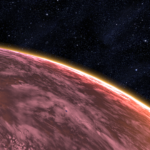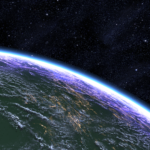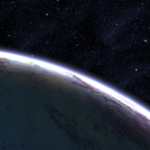System Specs:
- Stellar Mass: N/A Sol Masses
- Stellar Class: N/A
- Luminosity: N/A Sol
- Planets: 5
- Moons: 1
- Asteroid Belts: 0
- Asteroids: 0
- Objects: 0

The system and the planets within it are named after various idealized locations or states of mind.
–
Planets Directory:
- Arcadia
- Eden Prime
- Zion
- Nirvana
- Xanadu
- Mass Relay
–
Arcadia:
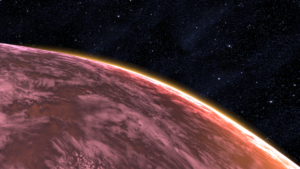
- Orbital Distance: 0.7 AU
- Orbital Period: 0.6 Earth-years
- Keplerian Ratio: 0.953
- Radius: 10,893 km
- Day Length: 25.6 Earth-hours
- Atmospheric Pressure: 16.17 atm
- Surface Temp: 358 °C
- Surface Gravity: 5.0 g
- Mass: 14.476 Earth-masses
An unusually large terrestrial world, Arcadia has a dense atmosphere composed of nitrogen and helium. Its scorching hot surface is mainly composed of alkaline basalts, but metal deposits are plentiful.
Although several spectacular examples of columnar basalt formation offer scenic beauty, Arcadia’s hostile environment has precluded commercial development.
–
Eden Prime:
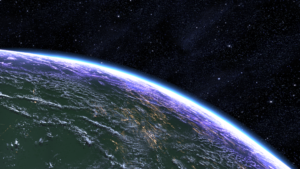
- Orbital Distance: 1.85 AU
- Orbital Period: 2.5 Earth-years
- Keplerian Ratio: 1.013
- Radius: 7,026 km
- Day Length: 64.1 Earth-hours
- Atmospheric Pressure: 1.45 atm
- Surface Temp: 23 °C
- Surface Gravity: 1.04 g
- Mass: 1.253 Earth-masses
- Colony: human
Capital: Constant, founded 2152, population 3,700,000 (2183), 4,200,000 (2186)
This idyllic agrarian world was one of the first human colonies established beyond the Charon mass relay. Eden Prime’s biosphere is unusually well-suited for importation of Earth-native life. This fertility drew heavy immigration and development by the Systems Alliance and various corporations.
Today Eden Prime is a model of sustainable, organized development. The population is housed [sic] space-efficient arcologies that tower over thousands of kilometers of green fields and orchards.
Mass Effect 3
This idyllic agrarian world was one of the first human colonies established beyond the Charon mass relay. Eden Prime’s fertile biosphere drew heavy immigration from the Systems Alliance and other human organizations.
In 2183, Eden Prime was attacked by a geth force led by the rogue Spectre Saren Arterius. Commander Shepard, responding to the attack, encountered a Prothean beacon that warned of imminent Reaper invasion. It is thanks to this beacon, and the Commander’s quick action, that the galaxy has any chance of survival today.
Although the Reapers rushed past much of the Exodus Cluster in their plan to take Earth, it is clear the war has come to Eden Prime. Distress signals have jammed all available frequencies, fires burn in vast swaths across the arable land, and its once-extensive monorail system is twisted metal. Cerberus has much to lose if word of their ruthless attack on the human colony gets out. What they stand to gain must be equally valuable.
“I know when something’s not right.” — Spoilers for Mass Effect: Incursion follow.
“The chances of surviving are… slim.” — Spoilers for Mass Effect 2 follow.
“There won’t be an Earth left to save…” — Spoilers for Mass Effect 3 follow.
Additional Information
Eden Prime is a human colony founded close to the Inner Council Space borders. Known for its pristine, Earth-like greenery and suitability for sustaining life, it has become a kind of symbol for humanity’s ability to create functioning colonies in an interstellar community. Eden Prime is known for being a beautiful paradise for all species. Most long time colonists are in the agriculture business.
While estimates on Eden Prime’s population put a figure of around 3.7 million in 2183, data collected by the Collectors and retrieved by Aria T’Loak a week before the SSV Normandy’s destruction has a tally of 3,962,450 humans.
In 2185, the planet is named a “culturally significant site” by Earth’s Council for the Preservation of Human History and Culture. Since the geth attack two years earlier, however, according to Zaeed Massani only the farms on Eden Prime have been rebuilt.
50,000 years before the present era, Eden Prime was a Prothean colony. It was overrun by Reaper forces: Reaper Destroyers and Sovereign-class vessels descended upon the planet and leveled its cities, supported by legions of Collector troops.
One bunker complex on the planet was supposed to sustain a million Protheans in stasis pods but indoctrinated traitors divulged its existence. A series of disasters brought on by desperation extensively damaged the bunker and reduced the survivors to mere hundreds. By 2186, only one surviving stasis pod was unearthed from the complex, and it has attracted the notice of Cerberus.
The rogue human organization has taken to abducting the colony’s able-bodied men and women while researching how to open the pod. A local resistance movement formed to thwart Cerberus objectives, and how successful they are depends on the level of intel they receive.
Known flora native to Eden Prime include lace-in-lilac. Seeds from this plant have been transported 2.5 million lightyears away by Milky Way colonists to the Andromeda galaxy in the hope of starting a garden there someday.
–
Zion:

- Orbital Distance: 14.05 AU
- Orbital Period: 52.8 Earth-years
- Keplerian Ratio: 0.995
- Radius: 74,333 km
- Day Length: 10.5 Earth-hours
- Atmospheric Pressure: N/A atm
- Surface Temp: N/A °C
- Surface Gravity: N/A g
- Mass: N/A Earth-masses
- Satellites: 112
- Colony: human, population 1,061 (2183), 1,062 (2186)
Zion is a hydrogen-helium gas giant even larger than Jupiter. Despite its deep gravity well and lethal radiation, it supports a small helium-3 mining industry. The reason is simple: as the only gas giant in the Utopia system, it is the only local source for fuel for Eden Prime’s power stations and spaceports.
Zion has 112 satellites, ranging from orbiting asteroids to the moon of Asphodel, which is large enough to retain a thick atmosphere.
–
Nirvana:

- Orbital Distance: 25.6 AU
- Orbital Period: 129.9 Earth-years
- Keplerian Ratio: 0.994
- Radius: 3,212 km
- Day Length: 63.9 Earth-hours
- Atmospheric Pressure: 0.02 atm
- Surface Temp: −203 °C
- Surface Gravity: 0.2 g
- Mass: 0.05 Earth-masses
Nirvana has a trace atmosphere of xenon and krypton. The surface is a mix of water ice and iron oxides, with cryovolcanic plumes of potassium concentrated around the equatorial ridge.
Nirvana has little of commercial or scientific interest. Though a few geological research stations were constructed in the early 2160s, all have been shut down for years. The Alliance maintains an automated ice cracking station, which has quietly stockpiled a large amount of deuterium fuel for use by the fleet.
Mass Effect 3
Nirvana has a trace atmosphere of xenon and krypton. The surface is a mix of water ice and iron oxides, with cryovolcanic plumes of potassium concentrated around the equatorial ridge.
Nirvana has little of commercial or scientific interest. Though a few geological research stations were constructed in the early 2160s, all have been shut down for years. The Alliance maintained an automated ice cracking station, which stockpiled a large amount of deuterium fuel for use by the fleet. This was commandeered in the preparations for the war, and now Nirvana is completely silent.
–
Xanadu:

- Orbital Distance: 101.7 AU
- Orbital Period: 1,029.9 Earth-years
- Keplerian Ratio: 0.992
- Radius: 3,730 km
- Day Length: 69.8 Earth-hours
- Atmospheric Pressure: 0.19 atm
- Surface Temp: −216 °C
- Surface Gravity: 0.3 g
- Mass: 0.102 Earth-masses
Xanadu’s atmosphere is composed of methane and argon, while the planet’s frozen surface is largely potassium with deposits of calcium. Its location in the deep cold of the outer system and its lack of valuable resources leave little to recommend it.
Trivia
Xanadu was the capital city of the Mongol conqueror Kublai Khan’s Yuan Dynasty in what is now China. After the Venetian explorer Marco Polo visited the city in 1275 it came to be used as a metaphor for opulence.
–
–
video

